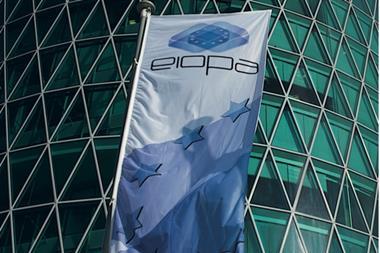In its latest annual report on the AP national pension funds, consultancy McKinsey has told the Swedish Finance Ministry that exactly what constitutes an illiquid and a liquid investment should be clarified across all the funds.
In its 2020 evaluation of all six AP funds – the five buffer funds behind the Swedish state pension as well as the premium pension default option provider AP7 – McKinsey wrote: “Liquid assets are defined to some extent in the law, but it does not specify the details of how the definition can be implemented operationally.”
While the report, which has been submitted to the Finance Ministry, addressed all six funds, which together managed SEK2.41bn (€23.6bn) at the end of last year, McKinsey homed in particularly on the main buffer funds, AP1-4, regarding the need for a consistent distinction between illiquid and liquid assets.
“Establishing a common definition would facilitate follow-up to the investment rules for the First to Fourth AP Funds and comparisons between the funds,” it said.
This recommendation comes against the background of the two-step reform to the mandate for AP1-4 which freed them up to invest more in illiquid assets.
The 2019 element of the change determined that a maximum of 40% of each fund’s market value could be invested in illiquid assets, according to McKinsey.
The report includes three other main recommendations – boosting transparency on fossil energy strategies; developing climate strategies to include more fixed income and alternative assets, and reporting clear goals and goal fulfilment for all sustainability targets.
McKinsey said the AP funds had chosen different strategies for their work with climate change, including investments in fossil energy, and had different degrees of transparency around this – for example in terms of limit values and which tools were applied.
“Increased transparency around the funds’ work – and possibly increased cooperation where there is the opportunity (given investment strategies and secrecy), for example on a common definition of investments in fossil energy – could increase the impact and understanding of the funds’ climate work,” the report said.
Currently, the AP funds’ climate and fossil energy strategies focus mainly on listed equities, the consultancy said.
Although the funds also worked with strategies for climate change across other asset classes to some extent, it said they could develop these further – and that this was in the plan for some of the funds.
Alongside the 2020 report, this year McKinsey has also produced a separate 20-page analysis of the main four buffer funds’ investments in fossil fuel energy.
Between 2016 to 2020, it said AP1-4 had cut their exposure to fossil energy by between 51% and 100% in terms of market value – work that started even before their new mandate required them to undertake “exemplary management” within the area of responsible investment.
The consultancy said work that is now happening around the world on the green energy transition could contribute to increasing the risk of fossil investments, and reduce their expected return.
“In this case, the First to Fourth AP Funds’ investments in the sector could be expected to decrease further, even where there is no decision on divestment from entire sectors,” it said in the report.
But because demand for fossil energy remained high, coupled with the fact that many sectors besides fossil energy were responsible for greenhouse gas emissions, the consultancy said tools other than divestment remained important for the AP funds.
“The First to Fourth AP Funds have strengthened their active corporate governance work regarding sustainability, and expect to continue pursuing these issues with companies which have a high degree of impact on the climate,” McKinsey wrote.
























No comments yet